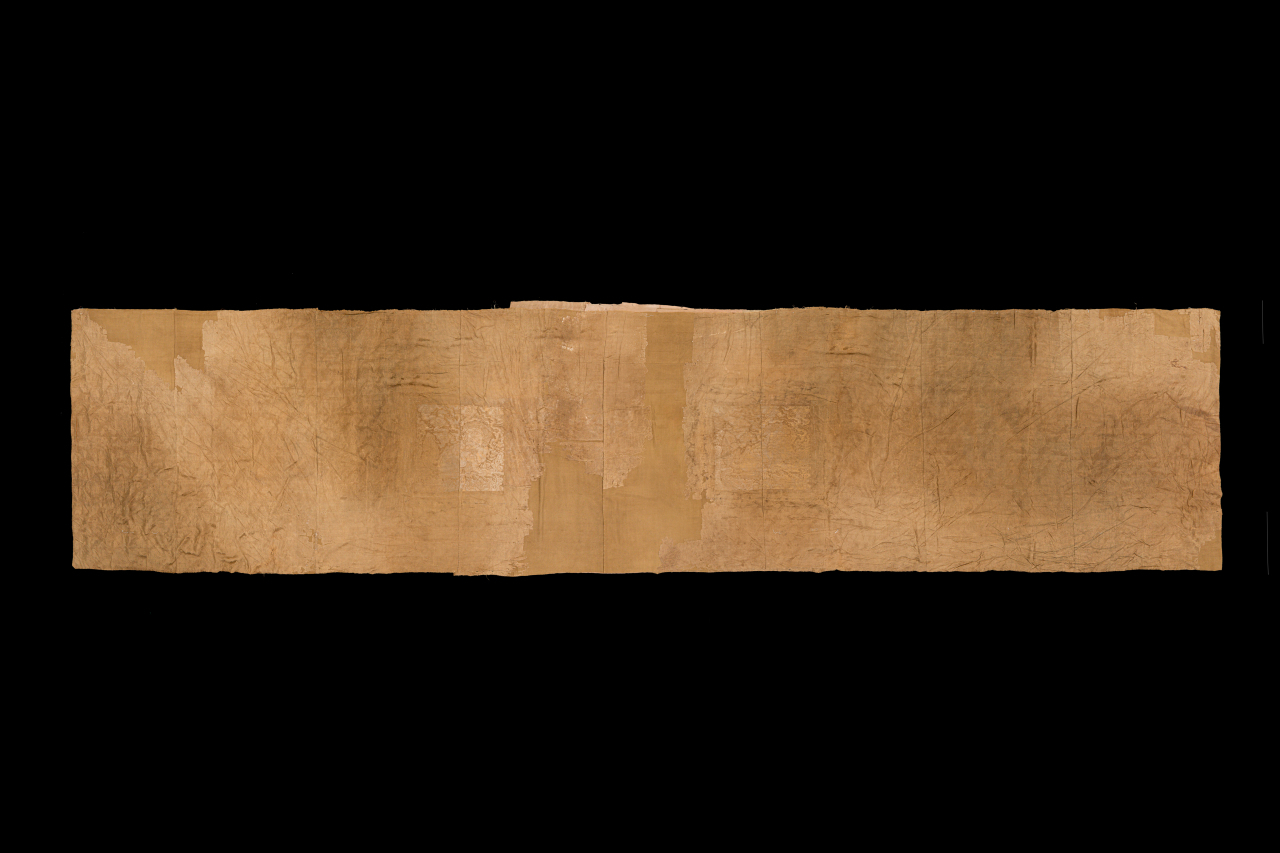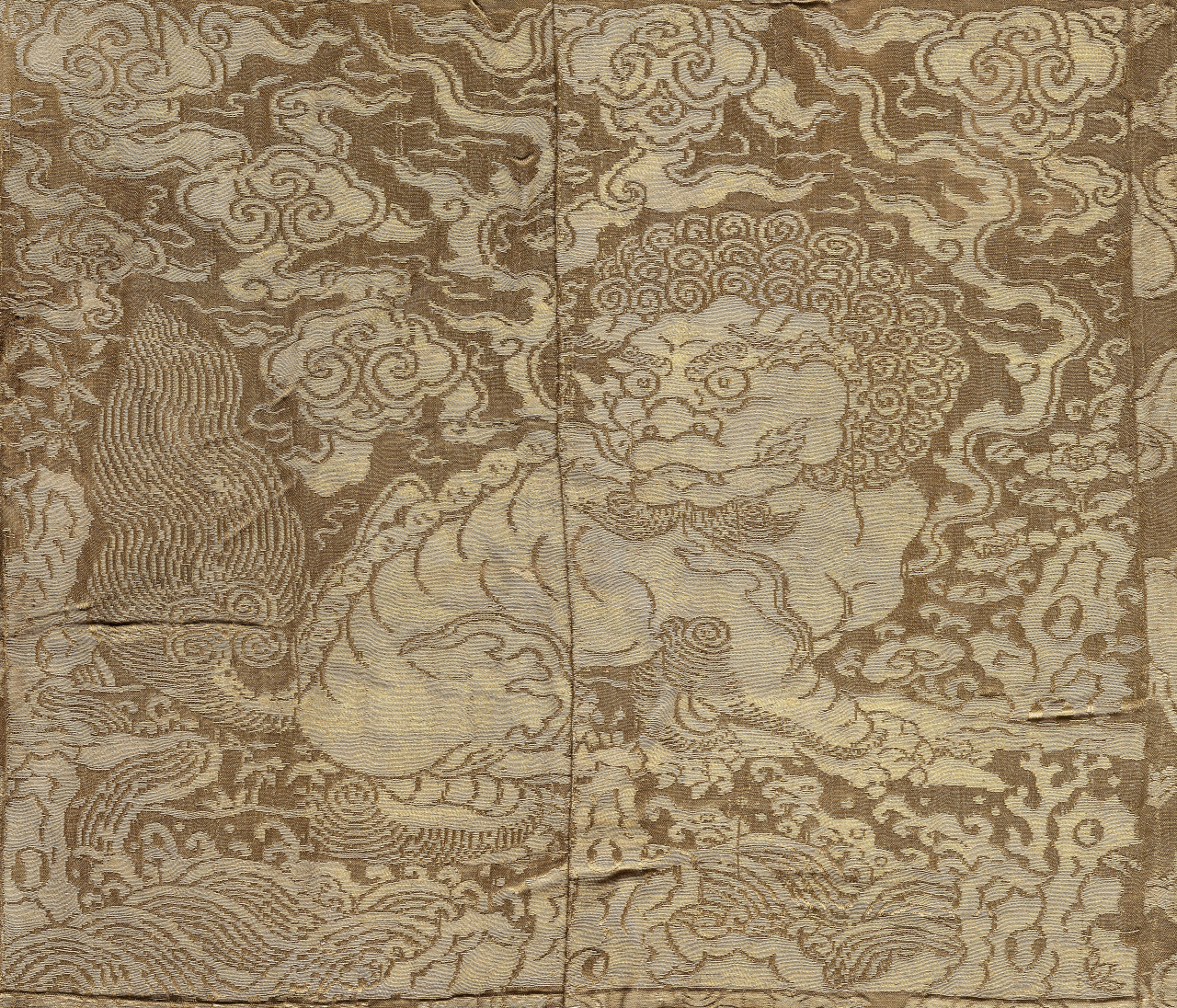 |
A skirt embroidered with a pair of golden lions from a 16th-century tomb discovered in Namyangju, Gyeonggi Province (CHA) |
A Joseon-era skirt embroidered with a pair of golden lions from a 16th-century tomb is set to be designated as a National Folklore Cultural Heritage, along with nine other costume-related artifacts found in the tomb, the Cultural Heritage Administration announced Thursday.
The relics were excavated from a tomb in Namyangju, Gyeonggi Province, from 2008 to 2009 during a housing development construction project in the area.
The development project included the area of Hwajeob-ri where over 100 tombs were discovered. In one tomb belonging to a woman -- her identity has yet to be confirmed -- 71 relics of 52 different kinds were found. Of the relics from the tomb, 10 artifacts were chosen for national folklore cultural heritage designation based on their historical value.
 |
A close-up image of lion embroidery on a 16th-century skirt found in a tomb in Namyangju, Gyeonggi Province (CHA) |
The skirt measures approximately 103-105 centimeters in length and 430.5 centimeters in width when laid flat. It features a lion embroidered with golden thread on the silk fabric.
In Joseon, animal embroidery was used on the attire of the royal family and court officials. The skirt which was found in the 16th century tomb is unique for its lion embroidery -- typically such embroidery would have been found on the attire or jeogori (the upper garment of a hanbok) of officials.
The tomb yielded other noteworthy items, including jangsam, an outer robe with wide sleeves which is tied with a wide band and was typically worn by monks or yangban class women for ceremonial occasions. The woman buried in the tomb was buried wearing a jangsam. The well-preserved wide band is also expected to contribute valuable insights into 16th-century Joseon fashion.
Additionally, another skirt found in the same tomb has a shorter front fold and a longer back section, which hints at a new design of skirt-making at the time, according to the CHA.
The final decision on the artifacts' designation will be made by the Cultural Heritage Committee following a minimum notice period of 30 days.







![[Today’s K-pop] Blackpink’s Jennie, Lisa invited to Coachella as solo acts](http://res.heraldm.com/phpwas/restmb_idxmake.php?idx=644&simg=/content/image/2024/11/21/20241121050099_0.jpg)